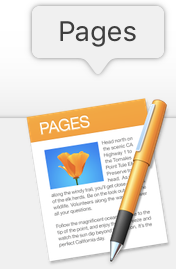In my eyes, EPUB has kind of become the new PDF. In a land laden with screened devices of both tablets and e-ink e-readers, the EPUB format allows for anyone to author any kind of publication for practically every device. The Portable Document File (PDF) is as the name implied when it was created, a useful tool for single page documents or fillable forms and have them readable on ‘portable devices’ (think back to the Plam/Handspring days). But for content creators of multiple page layouts intended to be flipped through like a traditional book, not scrolled through, on screened devices the tired-and-true PDF falls short in some regards.

Some of the advantages with EPUB comes from its ability to have dynamically scaling text (re-flowable) to fit any kind of screen you want to throw it on. Best of all, EPUB is an open book standard format and is predominantly written using XML and XHTML. However with that, there are some WYSIWYG style issues where some graphical effect (like shadows) that will not render exactly seen upon export to EPUB. Format syntax is key, and to help alleviate issues, authors should rely on making formal Text/Paragraph Styles.
Adobe InDesign is touted as one of the premiere tools to create and layout an EPUB. Be that as it may, the dependency on Creative Cloud for most users is causes stress. Especially if you are interested in a more simple book style such as a novel,
“InDesign is the equivalent of taking a jackhammer to a wall when you are trying to tack in a thumbtack to hang a photo.”
Sure, if you are trying to build a several hundred page course catalog for a University, and want to have video intros to each section along with external links and dynamic backgrounds; sure InDesign is a powerful and perfect tool to do so. But for the rest of us, both artisans of the written word and for the graphic arts minded, there are simpler options. This of these tools as reaching for that small ball-peen hammer to take to that thumb-tack analogy.
With that in mind, simpler and much more affordable options exists in the Apple environment; Apple Pages and Apple iBook (perhaps soon to be Apple Books) Author. These two products are both free to Apple users, and have a much less of a learning curve to get started.
But currently, these two apps are for two very different writers.
iBooks Author
(Possibly Apple Books Author in future releases)
iBooks Author is really tailored to its namesake; iBooks.
A format dedicated to the iOS environment, it has additional features that standard EPUB doesn’t utilize. But within it, you can save out your work as an EPUB (permitted that your work does not break the open standard syntax within EPUB). For a dedicated traditional book creator( ie, cover, section, chapter), this might be a good start for the avid wordsmith. The stock layout templates can lend themselves to textbook creation as well. However I would not describe this tool as intended for the graphical minded. Those looking to produce a more magazine or newsprint layout may find this app limited in functionality. This may change in the future, as Apple just annoucned at its 2018 WWDC confernce that iBooks will be branded in the future as Apple Books. And with brand name changes, Apple typically revisits the tools around the creation of the content they rebrand.
Pages
If you are looking to layout thing in a more graphical manor, this is where Apple Pages can really comes into its own.
Users on both sides of the design spectrum can will find this tool easy to use as well as contain some of the more ‘professional’ aspects to its tools. Given that Microsoft does not make a Publisher app for the MacOS environemnt, this is a good alternative if you are more comfortable with a more consumer friendly design app. With that said, if you are more inclined to the more professional tools like InDesign, Pages has some of the bare-necessities for layout including multi page spread display, user specified paragraph styles, and group/locking objects to the page. It too offers re-flowable text option for EPUB if you choose the Book template, or non re-floable text if you are doing a more graphic heavy spread.







You must be logged in to post a comment.